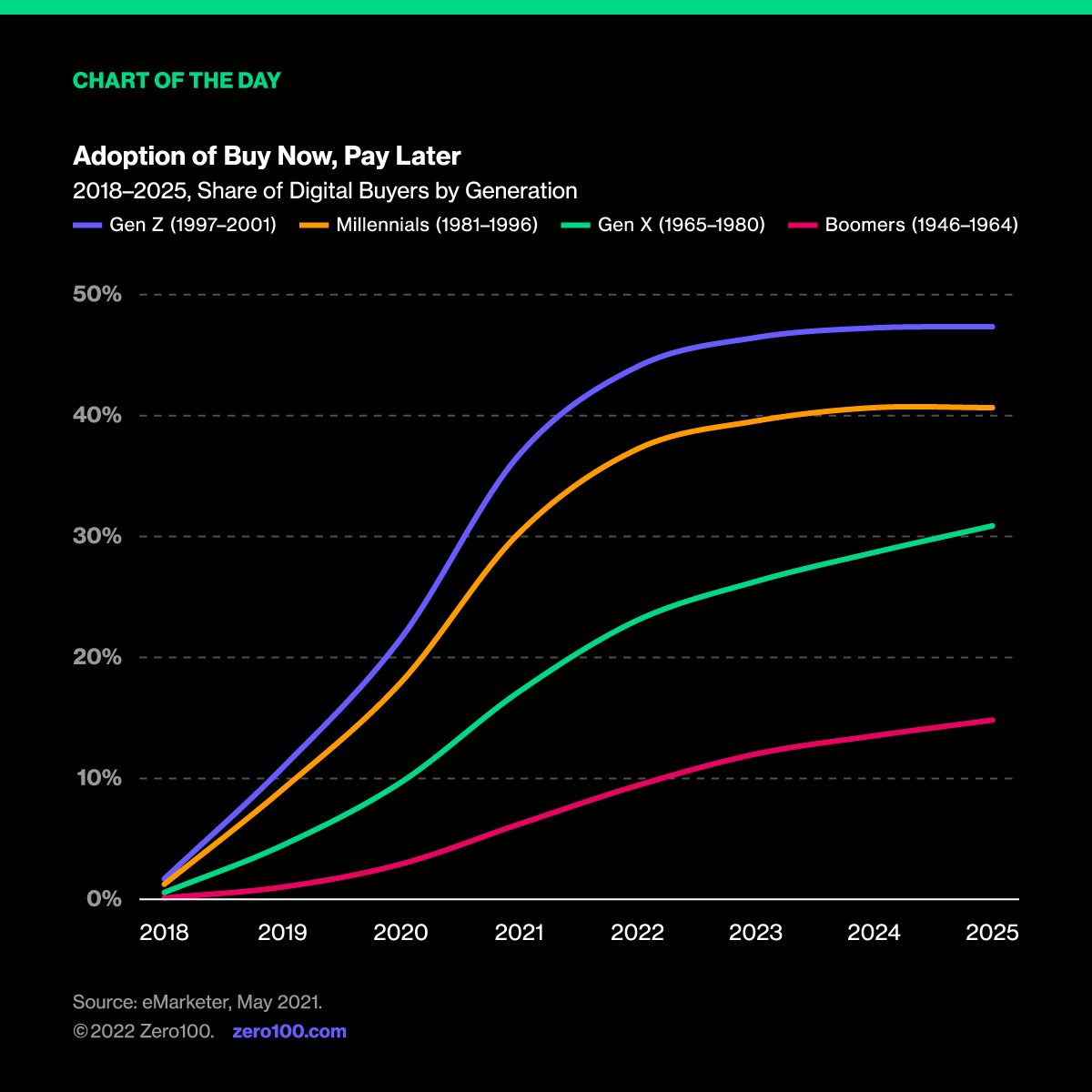The Kids Are NOT Alright...
SHEIN, one of the most successful fast-fashion companies (ZARA, H&M, Forever 21, Urban Outfitters) of the past decade with a $100B valuation, has just surpassed Amazon and Shopify in monthly app downloads—thanks in no small part to the most “eco-conscious” digital cohort, Gen Z. Despite the fact that three-quarters of Gen Zers in the United States claim a brand's sustainability is critical to making purchase decisions, contradictory data demonstrates this moral compass wavers enough to indulge in addict-level consumption of fast fashion.
Gen Z consumers draw much of their influence from... wait for it... social media. But unlike other cohorts, Gen Z remains the only demographic to rank killing time above connecting with friends and family as their primary use case for Instagram, TikTok, and YouTube. Capitalizing on this captive audience, the promotion of micro-seasons (new collections available every week) alongside #haultok trends (if you clicked through, I've probably already lost your attention...) have combined to create an exothermic reaction.
The fallout? The textile industry that catapulted the pace of fashion from seasonal to weekly collections now accounts for up to 8% of global carbon emissions, 9% of annual micro-plastic losses to the ocean, and rivals any and all water polluters by industry. Moreover, as we buy more clothes at greater frequently – the fact remains that the vast majority of textiles (~85%) get dumped.
...You Thought That Was Bad?
The immediate satisfaction associated with purchasing something trendy for next to nothing (we're talking, the cost of a $5 Venti Frappuccino for a dress), often with a promo code (acquired through an enabler social media influencer) is NOT to be underestimated. But what will happen if this indulgence costs... nothing?
While Gen Z is already starting to flex $150 billion in buying power, the cohort remains extremely budget conscious. Over half of Gen Z cite price as the most important factor when shopping – so when the choice is between buying $50 for four outfits at SHEIN versus only one outfit at Zara (or a fractional share of an outfit from Everlane), the line between fast fashion and disposal fashion begins to blur.
Enter "Buy Now, Pay Later" (BNPL). Also known as "point-of-sale loans" (Klarna, Afterpay, Affirm), these payment platforms effectively enable credit—without the hard credit check, borrower protections, or regulatory oversight of other “predatory” financial instruments. Brands, retailers, and consumers love these platforms equally as they continue to remove any (if not all) friction from the purchase process. As the practice has moved from large purchases to everyday items (including the websites of every fast-fashion brands referenced above), Gen Z adoption of these platforms has exploded.

In this instance, brands are arming consumers with tools that exacerbate already poor ESG choices—in direct contrast to consumer engagement models highlighted in Zero100's most recent report.
Solutions, Not Shaming
As a wise man once said: “This is a bummer, man...”
FULL DISCLOSURE. If it was not clear until now, that 1998 cinematic reference should cement the reader's suspicious that this post was authored by a worst offender than Gen Z (i.e., the judgmental Millennial).
Turning our attention to solutions, we see three compelling starting points—for brands, retailers, and customers, respectively:
#1 For BRANDS: Recognize Some Friction is Necessary
Last week, ZARA announced it would start charging for online returns following skyrocketing return rates reported by both Bohoo and ASOS last quarter. At some point, the lack of any disincentive to buy indiscriminately will eventually hurt the industry in roundtrip transportation and logistics costs.
#2 For RETAILERS: Engage with Re-commerce Platforms
The share of the apparel market controlled by resale, rental, and subscription models (RealReal, thredUp, Reflaunt, Rent the Runway, etc.) is expected to double to 14% by 2024. If done right, integrating replenishment vs. re-commerce opportunities at point-of-sale could ultimately preserve and protect customer loyalty as buying habits evolve.
#3 For CONSUMERS: Educate to Differentiate
The sixth annual Fashion Transparency Index profiles 250 fashion brands across five criteria (Policy & Commitments, Governance, Traceability, Know/Show/Fix, and Spotlight Issues). The information to make more informed purchase decisions is out there if you look for it. And spoiler alert: SHEIN ranks in the bottom 5th percentile...
Critical Reading
EATER
GrubHub's NYC Free Lunch Promo Didn't Go Smoothly
Commentary: A fascinating, 3-hour case study in the perils of promotions, n-tier partnerships, and the desperate need for more adaptive capacity constraints throughout the gig economy.
#NoFreeLunch #DemandPlanning
SKY NEWS
World's Plastic Waste Mapped from Space for the First Time
Commentary: Global Plastic Watch (GPW) demonstrated a new tool leveraging satellite imagery and artificial intelligence to detect plastic waste sites as small as 5x5 meters, providing a new detection and measurement tool for governments and NGOs.
#PlasticWaste #AI
GREENBIZ
General Mills, Schwan's and Target Want to Fix the Flexible Packaging Problem
Commentary: Timely profile of a new public-private partnership (MBOLD) in the Twin Cities Metro area that will yield a 170,000-square-foot recycling plant capable of converting 90-million pounds of low- and high-density polyethylene packaging into recycled resin on an annual basis.
#Packaging #Retail
